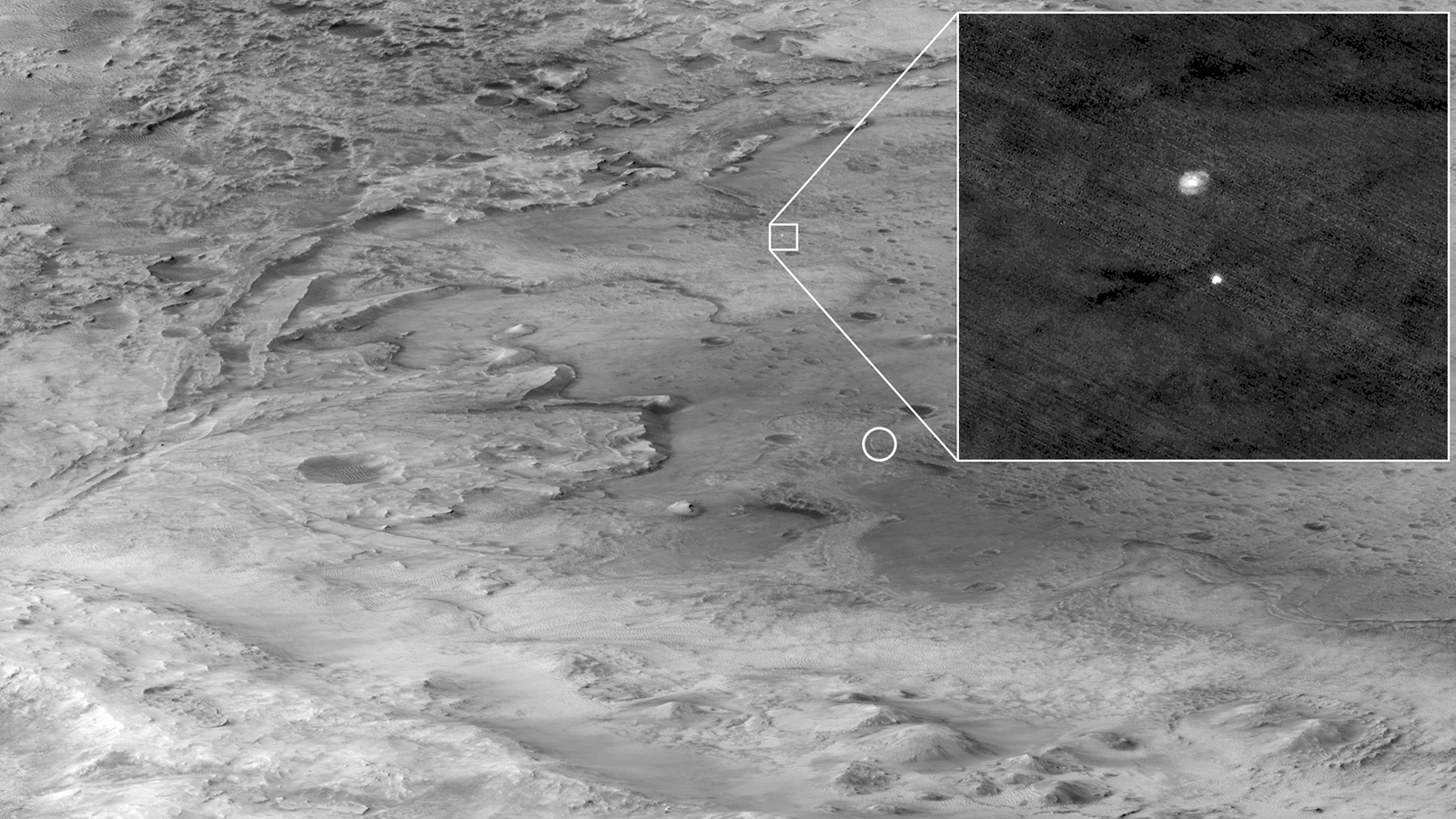Stay Up to Date
Submit your email address to receive the latest industry and Aerospace America news.
The Astrodynamics Technical Committee advances the science of trajectory determination, prediction and adjustment, and also spacecraft navigation and attitude determination.
After a seven-month cruise phase, NASA’s Mars 2020 mission reached the red planet in February to deliver its Perseverance rover with a sky crane landing, the touchdown system that brought Curiosity to Mars in 2012. The target for this mission was the Jezero Crater, with a final landing zone requirement allowing just 2.8 kilometers of position uncertainty. The orbit determination and trajectory maneuvers implemented by a navigation team at NASA’s Jet Propulsion Laboratory in California landed the rover within 1 km of the target, well within the requirement, placing the rover in the precise location it needed to complete its mission objectives — all with most of the team working remotely due to covid-19 restrictions.
The year started with the celebration of the return of the first subsurface sample from an asteroid to Earth after the Japan Aerospace Exploration Agency’s, or JAXA’s, Hyabusa-2 made the journey back from the asteroid Ryugu. The spacecraft released a capsule on its return flyby of Earth that was recovered in Australia in December 2020. Also in December, China’s Chang’e-5 lunar sample return mission gathered and returned 1.7 kilograms of lunar material, marking the first lunar sample returned to Earth since the Soviet Union’s Luna-24 mission in 1976. Another asteroid sample return mission, NASA’s OSIRIS-REx, initiated its return to Earth in May from the asteroid Bennu with a seven-minute thruster burn. The two-year journey will involve multiple orbits around the sun to synchronize with Earth’s orbit in late 2023, where the samples will similarly reach the surface by a deployed capsule.
In April, Northrop Grumman continued to demonstrate the potential of on-orbit servicing by docking its Mission Extension Vehicle 2 satellite to Intelsat’s 10-02 commercial communications satellite. This was the first time a servicing satellite had docked with a satellite in a geosynchronous orbit and will extend the operational lifetime of the Intelsat spacecraft by at least five years.
The need for improved international space traffic management policies was emphasized by the uncontrolled reentry of the 18-metric-ton Chinese Long March 5B rocket body in May. The piece of space debris ultimately landed in the Indian Ocean, but had this happened over a populated region, the expected 4 to 9 metric tons that would have survived reentry could have been much more destructive. The continued growth of several large constellations, to include SpaceX’s plan to operate 4,408 Starlink satellites, also underscores the need to develop improved prediction, monitoring and avoidance strategies to manage the increasingly crowded space environment.
In August, NASA’s asteroid radar research program observed its 1,000th near-Earth asteroid since radar tracking of asteroids began in 1968. Also that month, a separate group of astronomers discovered asteroid 2021 PH27, whose orbit takes it closer to the sun than any known object in the solar system, resulting in surface temperatures on the asteroid reaching 480 degrees Celsius.
Lastly, two ambitious planetary missions targeting asteroids reached milestones. NASA’s Lucy spacecraft was launched in October and is now on its way to being the first spacecraft to explore the Trojan asteroids near Jupiter, with plans to visit eight asteroids over the next 12 years. In November, NASA planned to launch the Double Asteroid Redirection Test spacecraft to the binary asteroid system Didymos and attempt to redirect an asteroid’s trajectory with a kinetic impactor, relying primarily on autonomous navigation techniques.
Stay Up to Date
Submit your email address to receive the latest industry and Aerospace America news.




